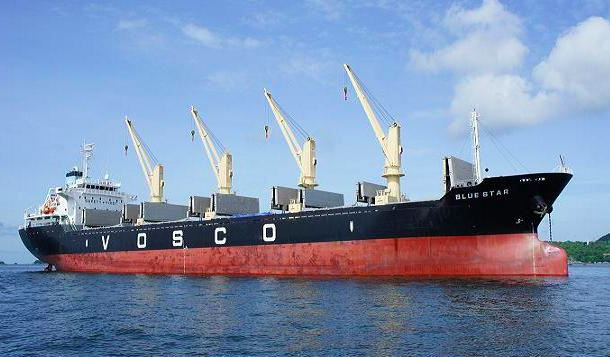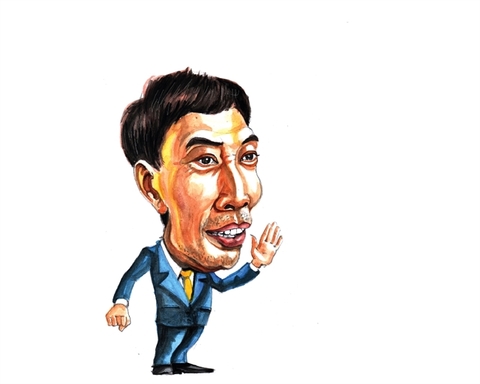 Economy
Economy

The world is changing as the ongoing coronavirus (COVID-19) pandemic continues to present unprecedented challenges to all economies, industries and living conditions.

|
Võ Trí Thành*
The world is changing as the ongoing coronavirus (COVID-19) pandemic continues to present unprecedented challenges to all economies, industries and living conditions.
Over three months or so, the new respiratory disease has been spreading across nearly all countries and territories and become a global disaster. Though it’s still difficult to estimate the exact economic damage caused by the pandemic, the impacts are extremely severe and are forecast to be even greater than the global financial crisis of 2008-09.
Consumption (except for essential commodities), trade and investment have all nose-dived. Supply disruption has put the brakes on production and employment. Trillions of US dollars have been wiped off financial markets. A third of the global population is under some sort of “lockdown”, and insecurity and bewildering psychology has exacerbated the negative effects of the pandemic.
From a public health crisis, the pandemic has evolved into an economic crisis.
It’s chilling to know more than 26 million Americans have filed for unemployment benefits since mid-March when the country issued 'stay-at-home' orders, and the world's biggest economy decreased 4.8 per cent in the first quarter, a shock compared to the 2.1 per cent growth in the fourth quarter of 2019.
The United States is not alone. China’s gross domestic product (GDP) fell 6.8 per cent from January-March, the first contraction since the country started official GDP records in 1992. Meanwhile, the European Union reported GDP also declined 3.5 per cent in the first quarter.
A global economic recession is underway. In its April report, the International Monetary Fund (IMF) forecast the global economy will contract by 3 per cent in 2020, marking the steepest downturn since the Great Depression of the 1930s.
Many countries – developed and developing nations – have had to launch unprecedented “economic relief” packages, both in scale (tens, hundreds or trillions of US dollars) and tools (easing monetary policies, sharply reducing interest rates, indefinite government bond-buying programmes, direct support for citizens and tax support for businesses and industries hard hit by the pandemic). Governments have also activated emergency laws to empower them to apply measures to fight the pandemic.
Everyone wants the disease to go away and leave this crisis behind as soon as possible, but the problem facing us is how to ease lockdown measures and re-open the economy while keeping the disease under control.
The situation is complicated and unpredictable. However, many countries are preparing to restart economies, sparking debates how the recovery will look like after the pandemic.
The most optimistic forecast is a V-shaped recovery which implies a quick recovery after a steep fall if the pandemic is eliminated in the second quarter and economic support measures are effective. The U-shaped prospect means a longer recovery if the pandemic is lengthy while the W-shaped scenario is more pessimistic if the pandemic returns after being controlled. The worst scenario is L-shaped when the disease is irrepressible and the economy is engulfed by the pandemic.
In general, East Asian economies are expected to be more capable of overcoming the COVID-19 pandemic as the region has experience of fighting SARS in 2003 and more effective policy tools to stimulate the economy than developed countries in Europe and North America (central banks in Asia have room to cut interest rates while benchmark rates in other regions are prevalent zero or negative).
From a policy angle, this may be more appropriate with the "Nike tick" policy option. The reason is that the recovery process will take place at a slower pace as governments take precautions while lifting restrictions, especially when there is no clear idea when the pandemic will end and a vaccine is created. Different countries are in different stages of the pandemic and have taken different policy responses. It also takes time for market and consumer behaviour to stabilise.
Besides, there is still a huge obstacle for the recovery – the risk of instability and even a financial crisis. This risk was high at the end of 2019 due to global debt problems. According to the February 2020 report of the World Bank, from 1970 to 2010, there were three waves of debt, beginning in the period of low interest rates associated with financial innovations and the promotion of borrowing. They all ended with a financial crisis and recession (1982, 1991, 2009) or a decline in global growth (1998, 2001). The current fourth wave of debt, starting in 2010, is the largest in terms of size, speed and breadth.
The pandemic and the unprecedented bailouts have created widespread liquidity and increased corporate and government debts, which could detonate the "debt bomb". Thus, strengthening resilience while ensuring room for macro-economic polices and financial stability are very important tasks for the post-pandemic period.
Việt Nam’s recovery pathway
As a highly open economy, the impacts of the pandemic on Việt Nam have been severe, especially as the outbreak takes huge tolls on its largest trading partners such as China, the EU, US and Japan.
The country’s economy expanded just 3.82 per cent in the first quarter, the lowest in 10 years. However, this figure did not reflect the difficulties encountered in production and business since early March.
The World Bank's April 2020 Economic Update for East Asia and Pacific forecast Việt Nam will grow between 1.5-4.9 per cent in 2020, lower than the 6.8 per cent target approved by the National Assembly. Scenarios from the Vietnamese General Statistics Office, which depend on the pandemic being over in the second or third quarter, forecast Việt Nam 's GDP growth will be in the range of 5-5.3 per cent.
The difficulties and challenges are huge. However, Việt Nam has the strong capacity to recover when the pandemic is over. According to the World Bank, Việt Nam's growth will reach 7.5 per cent in 2021 and about 6.5 per cent from 2022 thanks to improved external demand, a strengthened service sector and increased agricultural production.
Since the beginning, the country has placed its prime focus on controlling the disease and saving people's lives. The Government has introduced drastic and proactive measures to mitigate the adverse impacts of the pandemic on business and production, while supporting vulnerable groups in society.
A series of packages and support policies have been launched such as a VNĐ62 trillion (US$2.7 billion) socio-economic relief package, while the central bank has lowered many operating rates to gradually create a lower lending rate base for the whole economy. Commercial banks have been instructed to reduce interest rates for business loans or allow businesses to delay debt payment. In addition, commercial banks have expanded credit packages worth VNĐ300 trillion and reduced many types of service fees.
The Ministry of Finance has also implemented a package worth up to VNĐ180 trillion in the form of payment extensions for tax, land rent and social insurance. It is also proposing another package worth hundreds of billions of đồng in the form of exemptions and reductions of some taxes and fees for businesses, especially for small- and medium-sized companies, households and businesses in sectors heavily affected by pandemic.
Accelerating the disbursement of public investment, which was very slow in 2019, is another effective solution to "offset" the slowing growth of other sectors. With total capital (not yet disbursed in 2019 and the plan for 2020) equivalent to $30 billion, this is expected to pull up industrial production and services, thereby creating significant employment and income for workers. Infrastructure development is also a necessary foundation for long-term growth.
Basically, Việt Nam has successfully kept the pandemic under control, gradually lifting restrictions and reopening the domestic market. The main policy is to live safely and promote the recovery process.
Given its limited resources and tools, the country still has room to support this process but must consider the conditions to implement support policies to ensure high efficiency. The first is to ensure the “right selection” in terms of which sectors should be given support such as infrastructure, training, innovation, employment and medical equipment manufacturing (the global trade value of medical equipment has reached $1 trillion during the pandemic).
Second, the recovery process must be in line with the acceleration of structural reform, while increasing the competitiveness of the whole economy, the business and investment climate, the efficiency of State-owned enterprises and strengthening the financial system.
Third, this process must also be associated with new global trends in the world which have changed or somehow accelerated since the pandemic, such as rapid changes in supply chain establishments, technological advances, digital transformation, and new demands in lifestyle and consumption patterns towards a greener and safer future.
Last, it is essential to ensure the economy's resilience. We may suffer a larger budget deficit at some stages or may revise the debt ceiling, but we still have to ensure macro-economic stability. Unstable macro-economic conditions not only reduce the effectiveness of socio-economic support measures but also hinder the economic recovery process. — VNS
* Võ Trí Thành is a senior economist at the Central Institute for Economic Management (CIEM) and a member of the National Financial and Monetary Policy Advisory Council. The holder of a doctorate in economics from the Australian National University, Thanh mainly undertakes research and provides consultation on issues related to macroeconomic policies, trade liberalisation and international economic integration. Other areas of interest include institutional reforms and financial systems.